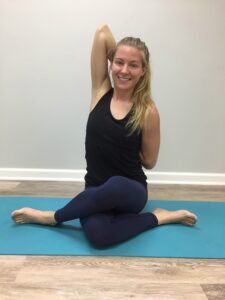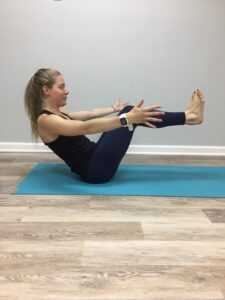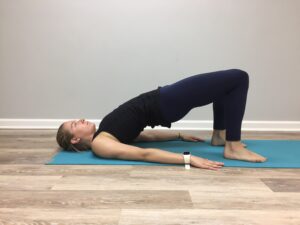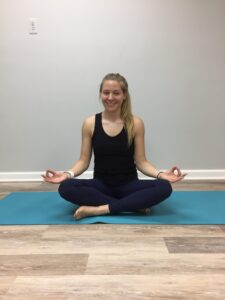Chakras 101: Understanding Your Energy Centers
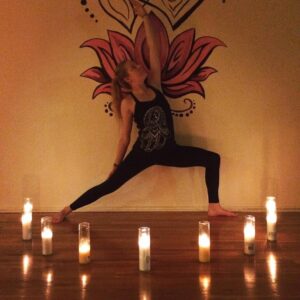
By Shannon Herbert, RYT 200
You may have heard of the chakras. Perhaps a yoga instructor talked about them in class or you read something about them. But exactly what are the chakras and why are they considered important not only in our yoga practice but our daily lives as well?
Put simply, the chakras are energy centers within our body through which energy flows. In an ideal state, the chakras are aligned and energy can flow freely throughout the body. Unfortunately, this is not always the case. Unbalanced or blocked chakras can lead to a feeling of unbalance or uneasiness and can manifest in many ways including physical illness. Because of this, it is important to keep the energy flowing freely through the chakras in order to feel our best!
We have seven chakras within our bodies starting from the base of the spine and working up to the top of the head. Each chakra represents something different and expresses its imbalances differently. Below is a list of the seven chakras, where they are located, what they represent or are associated with, and what asanas (yoga postures) target that chakra.
Root Chakra (Muladhara Chakra)
The root chakra is found at the base of the spine, the pelvic floor. The root chakra is the base of the energy system. It represents the foundation of our body and the feeling of being grounded. The Muladhara chakra hosts our food, sleep, sex, and survival instincts. Poses that help ground you are useful in aligning the root chakra. Asanas such as Warrior Stances, deep lunges, and chair pose bring awareness to this area. Similarly, poses such as forward bends and child’s pose help to ground us, aligning this chakra.
Sacral Chakra (Svadishthana Chakra)
The sacral chakra is found in our lower abdomen, about two inches below the navel. It is the home to our reproductive organs and desires. It is associated with our well-being, pleasure, sexuality, and sense of abundance. Like the root chakra, asanas such as forward folds, lunges, squats, and hip-openers such as pigeon pose and cow face pose, help align and bring awareness to this area.
Solar Plexus Chakra (Manipura Chakra)
The solar plexus chakra is located in the upper abdomen, right above the navel. It is considered our body’s energy power-house. This chakra is associated with self-confidence, self-esteem, and self-worth. It also relates to our feelings of power and the ability to control our lives. A blockage in this area may express itself in heightened ego and aggressive ambition. Twists are wonderful for aligning this chakra.
Heart Chakra (Anahata Chakra)
The heart chakra is located in the center of the chest and is proposed to be the most powerful center of all, according to Himalayan Tantric tradition. When open and freely flowing, this chakra is associated with inner peace, love, and joy. But when blocked, it can cause us to radiate disappointment, loneliness, fear, and insecurity. Pranayama practice is a wonderful way to bring more attention to the heart chakra. Backbends, such as camel pose, bridge pose, and wheel pose, are also great to open the energetic centers of the Anahata chakra.
Throat Chakra (Vishuddi Chakra)
The throat chakra is located in the throat, no surprise there! This is the home to our communication abilities of speech and hearing. It is associated with the expression of our feelings and the truth. To purify this chakra, try to incorporate asanas such as plow pose, camel pose, shoulder-stand, and fish pose into your practice.
Third Eye Chakra (Ajna Chakra)
The third eye chakra is located in between the eyes. It is considered the command center, as it is the meeting point between two other major energetic streams in the body, the ida and pingala nadis (more on the Nadis to come), and the place where the body and mind meet. When aligned, the Ajna chakra is associated with imagination, wisdom, intuition, and our ability to think and make decisions. Sitting in sukhasana, easy pose, and working on your pranayama can help align this chakra.
Crown Chakra (Sahasrara Chakra)
The crown chakra is located at the top of the head. It is associated with our connection to spirituality, inner and outer beauty, and pure bliss. Savasana, corpse pose, is a great asana to promote balance in the crown chakra.
Try out this yoga flow to open and align the chakras to create a balanced flow of energy throughout the body.
1. Tadasana/Mountain Pose (Root Chakra)

2. Gomukasana/Cow Face Pose (Sacral Chakra)
3. Navasana/Boat Pose (Solar Plexus Chakra)
4. Setu Bandha Sarvangasana/Bridge Pose (Heart Chakra)
5. Salamba Sarvangasana/Shoulder Stand (Throat Chakra)
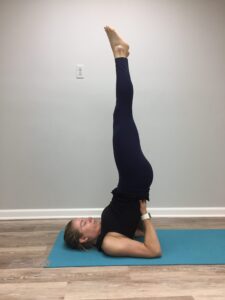
6. Sukhasana/Easy Pose (Third Eye Chakra)
7. Savasana/Corpse Pose (Crown Chakra)
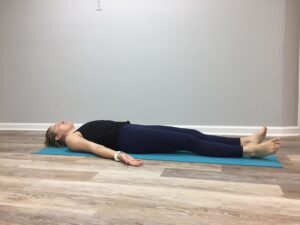
If not sure which chakra of yours might be unbalanced, Yoga Journal has a great, quick online quiz you can take to see which, if any, chakras are unbalanced! Feel free to check it out here: https://www.yogajournal.com/yoga-101/quiz-chakras-out-of-balance and incorporate some of the poses that target that chakra into your yoga practice to realign yourself.

